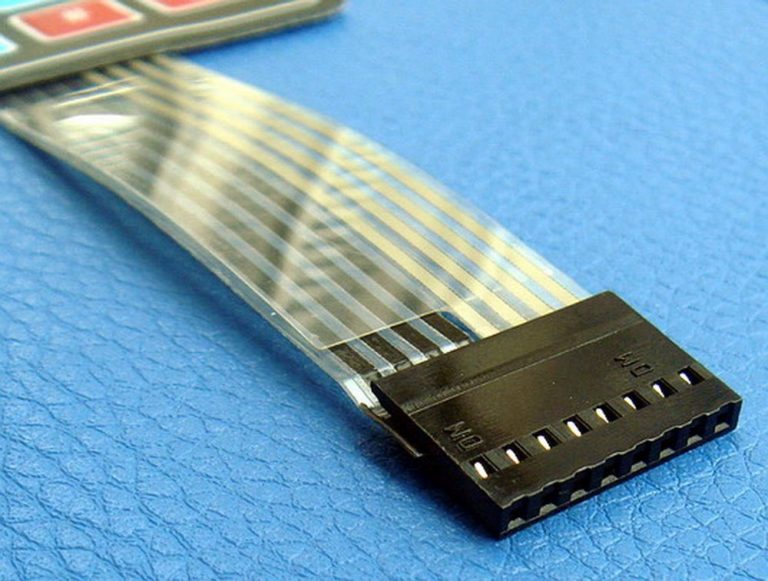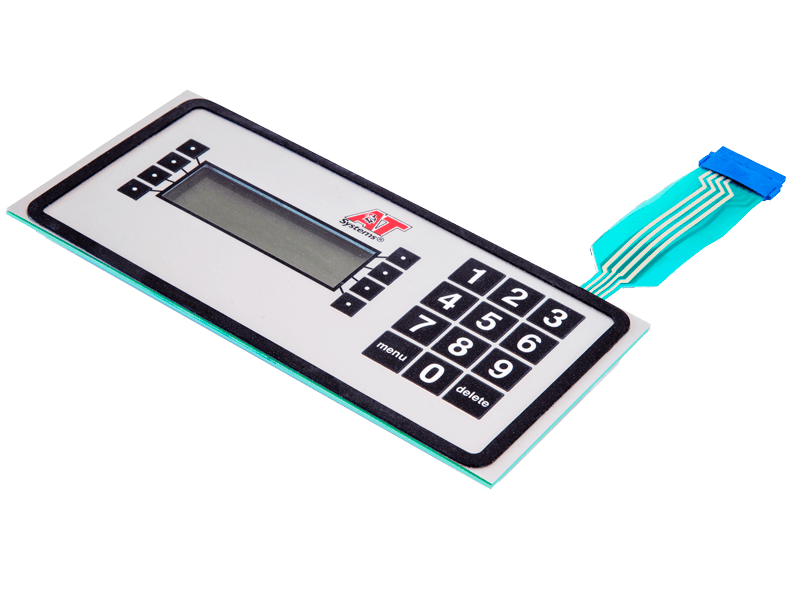Everything About Membrane Switch Over: Understanding Its Style and Functionality
When you think of the control interfaces in modern tools, membrane buttons commonly enter your mind. These parts are more than just switches; they blend style and functionality flawlessly. Recognizing how they function and what makes them reliable can change your point of view on day-to-day electronic devices. There are nuances to their layout and efficiency that you could not be aware of. Allow's discover what collections membrane layer changes besides other control systems.
What Are Membrane Layer Buttons?

Their seamless nature makes them very easy to clean and resistant to dirt and moisture, an important feature in several environments. Membrane buttons can likewise be customized concerning shape, dimension, and graphics, permitting makers to develop unique user interfaces tailored to particular items. Plus, they're lightweight and slim, which helps in decreasing the overall bulk of gadgets. Overall, membrane switches play a considerable duty in boosting customer experience throughout a wide selection of applications.
Just How Membrane Layer Changes Work
When you push a trick on a membrane layer button, it triggers a simple yet reliable mechanism. membrane switch manufacturer. The top layer, frequently made of flexible material, presses down onto a conductive layer below it.
You'll observe that the tactile feedback differs based upon the switch layout, offering either a soft click or a much more pronounced feedback. As soon as you launch the trick, the membrane layer go back to its original placement, reopening the circuit and quiting the signal. This procedure occurs almost instantaneously, ensuring a responsive individual experience.
Membrane switches are popular as a result of their sturdiness and resistance to dirt and wetness, making them suitable for different applications, from house appliances to medical tools. Recognizing this operation assists you appreciate their prevalent use.
Trick Parts of Membrane Layer Switches
Understanding the key components of membrane layer buttons is basic for realizing their capability and design. At the core, you'll find the visuals overlay, which provides the aesthetic user interface for individuals. Under that, there's a spacer layer that separates the circuit layers, making certain that they do not make call until pushed. The circuit layer is where the magic takes place; it includes conductive traces that finish the circuit when you press the switch. An additional necessary component is the sticky backing, permitting the button to adhere to surfaces safely. The protective layer shields against environmental elements and put on, extending the button's life-span. Each component plays a significant duty in making certain trustworthy performance and user interaction. By comprehending these parts, you'll obtain understanding into just how membrane layer switches over operate and their importance in various applications.
Materials Utilized in Membrane Switch Over Design
The performance and resilience of membrane layer switches over heavily depend on the products utilized in their layout. You generally experience polyester and polycarbonate as key substratums as a result of their exceptional strength and adaptability. These materials stand up to scratches and chemicals, making them perfect for requiring atmospheres.
The conductive layers typically utilize silver or carbon, picked for their reliability and conductivity. membrane switch manufacturer. Silver offers premium performance, while carbon is an affordable alternative. For the overlay, you may think about a matte or glossy coating, depending upon your visual needs and customer experience
Adhesives play an essential role too; they bond layers firmly and guarantee long life. Make sure to pick adhesives that stand up to environmental factors like temperature and moisture. Do not forget the value of an excellent printing technique for graphics, as it boosts both performance and visual allure. Selecting the ideal materials will certainly assure your membrane button stands the test of time.
Style Factors To Consider for Membrane Switches
While creating membrane layer switches, it's vital to take into account different variables that affect their capability and customer experience. Beginning by concentrating on the design and switch dimension; make certain they're user-friendly and very easy to navigate.
Verify your style fits ecological factors, like dampness or temperature variations, which could impact efficiency. By very carefully thinking about these elements, you'll create a membrane switch that boosts use and satisfaction.
Applications of Membrane Buttons
Membrane layer buttons are functional elements found in various applications, from industrial tools to consumer electronics. You'll see their influence in equipments that require resilient interfaces and in tools that profit from streamlined styles. Comprehending these applications helps you value the functionality and usefulness of membrane layer buttons in everyday modern technology.
Industrial Devices Use
When you're looking to enhance the capability of commercial tools, membrane layer switches offer a reputable solution that combines longevity with user-friendly layout. These switches are excellent for severe atmospheres, providing resistance to dirt, dampness, and chemicals. Accept membrane layer buttons to enhance your operations and improve total performance.
Consumer Electronic Devices Assimilation
In the domain name of consumer electronics, membrane switches play a crucial function in improving customer communication and gadget capability. You'll locate them in gadgets like microwaves, remote controls, and video gaming consoles, giving a smooth method to communicate with technology. Their sleek style permits for easy combination into different items, making controls intuitive and straightforward. With their capability to include graphics and backlighting, you can appreciate a modern visual that matches the device's total appearance. Membrane layer switches also guarantee longevity and resistance to dirt and moisture, extending the life-span of your electronics. By picking membrane switches, you boost not just the capability but likewise the design of your tools, making daily communications smooth and pleasurable.
Benefits and Negative Aspects of Membrane Buttons
While membrane switches supply a variety of advantages, they also come with some drawbacks that you should take into consideration. One considerable benefit is their small layout, making them ideal for space-constrained applications. They're likewise economical, giving a long lasting solution with a reduced production price. Furthermore, their seamless surface is easy to clean, boosting health in environments Read Full Report like healthcare facilities. visit site

Nonetheless, there are negative aspects. Membrane layer buttons can have a much shorter life expectancy contrasted to mechanical buttons, particularly under hefty usage. They can additionally be much less tactile, which could affect user feedback during operation. If harmed, repairing them can be difficult and often requires full substitute. Inevitably, their sensitivity to severe temperatures and ecological problems may restrict their effectiveness in specific settings. Stabilizing these pros and cons will certainly help you figure out if membrane buttons are the ideal suitable for your project.
Frequently Asked Inquiries
How Much Time Do Membrane Switches Typically Last?
Membrane switches usually last in between 5 to 10 years, depending upon use and environmental conditions. You'll intend to examine elements like wear, exposure to moisture, and temperature level fluctuations to gauge their long life successfully.
Can Membrane Switches Over Be Customized for Certain Layouts?
Yes, you can personalize membrane layer buttons to fit particular layouts (membrane switch manufacturer). You'll have the freedom to select colors, shapes, and formats that match your task's demands, guaranteeing they blend perfectly with your total aesthetic
What Is the Expense Array for Membrane Switch Production?
The cost range for membrane button production usually falls between $1 and $10 per unit, depending upon aspects like layout complexity, amount, and materials. You can get quotes from producers to find the best choice.

Are Membrane Layer Switches Water Resistant or Resistant?
Membrane buttons can be made to be water-proof or immune, depending on materials utilized and building and construction techniques. If you need them for wet settings, assure you specify those needs throughout the design procedure.
How Do Membrane Layer Switches Contrast to Standard Switches?
Membrane layer buttons are normally thinner and a lot more versatile than conventional switches, supplying a streamlined style. They're see commonly much easier to clean up and integrate, yet may not provide the responsive responses you're utilized to with mechanical choices.
Final thought
